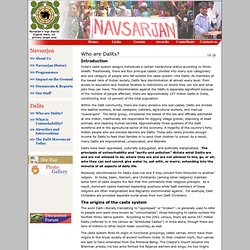

Shashi Tharoor: The West's Biggest Misconceptions About India. Managing Partner, Amarchand and Mangaldas. Mr Cyril Shroff is a managing partner of Amarchand & Mangaldas & Suresh A Shroff & Co - India's largest and foremost law firm, with approximately 450 lawyers.

Amarchand Mangaldas has offices at Mumbai, New Delhi, Bangalore, Kolkata and Hyderabad. With over 25 years of experience in a range of areas, including corporate laws, securities …markets, banking, infrastructure and others, Mr Shroff is regarded and has been consistently rated as India's top corporate, banking and project finance lawyer by several international surveys including those conducted by International Financial Law Review (IFLR), Euromoney, Chambers Global, Asia Legal 500, Asia Law and others. Mr Shroff has authored several publications on legal topics.
He is a visiting lecturer of securities law at the Government Law College. The world's slums are overcrowded, unhealthy - and increasingly seen as resourceful communities that can offer lessons to modern cities. NOT EVERYBODY LIKED "Slumdog Millionaire" as much as the Oscar committee did.

Aside from slum dwellers offended by the title, some critics lambasted its portrait of life in Dharavi, the biggest slum in Mumbai, as exploitative. A Times of London columnist dubbed it "poverty porn" for inviting viewers to gawk at the squalor and violence of its setting. Surviving on a little luck and lots of street smarts - LA Times. Shekhar Sahni has a cocky air, a music player filled with Hindi tunes and a swagger befitting someone who's beaten the odds in a culture where it's drummed into you early to accept your fate.

The 21-year-old grew up on India's rough streets and dreams of becoming a Bollywood star. Sahni liked the hit film "Slumdog Millionaire," which is up for 10 Oscars on Sunday, including best picture, but he was not particularly impressed by the way it depicted street life. Dharavi.pdf. Documenting Caste Discrimination in India. India is a country that's changing fast – yet it's still known for its rigid caste system.

Members of India's lowest class were traditionally called "untouchables. " They're now known as Dalits. But despite the name change, and laws to protect them, Dalits say they still suffer widespread discrimination. Now, a group of volunteers throughout India is gathering video evidence of that discrimination in an effort to end it. The videos show a man who complains that a local barber refuses to cut his hair; a group of children who are forced to eat lunch separately from their classmates; women who walk for hours to fetch water because they are not allowed to use the public tap in the village None of the footage on its own is particularly dramatic. Amit is a Dalit, who lives in the northern state of Haryana.
"This Dalit stamp is always with us," Amit said. Amit takes me to visit his friend, another Dalit named Vimal. "They can't handle us having money or education," said Vimal. Who are Dalits? — Welcome to Navsarjan. Introduction India's caste system assigns individuals a certain hierarchical status according to Hindu beliefs.

Traditionally, there are four principal castes (divided into many sub-categories) and one category of people who fall outside the caste system—the Dalits. As members of the lowest rank of Indian society, Dalits face discrimination at almost every level: from access to education and medical facilities to restrictions on where they can live and what jobs they can have.
The discrimination against the Dalits is especially significant because of the number of people affected; there are approximately 167 million Dalits in India, constituting over 16 percent of the total population. Caste: Castes in India. Nowhere is caste better exemplified by degree of complexity and systematic operation than in India.

The Indian term for caste is jati, which generally designates a group varying in size from a handful to many thousands. The Caste System. For thousands of years on the Indian subcontinent, a person’s social class was determined by birth.

Historians later called this the caste system. Caste members lived, ate, married, and worked with their own group. A person born into one caste rarely changed castes or mixed with members of other castes. Social rules defined how to behave within a caste and when in the presence people from other castes. The caste system precedes written history, but it seems to have developed slowly over time based on the traditional beliefs of the Aryan nomads who began moving onto the subcontinent about 1000BCE. Each caste had a clearly defined role. The Caste System in India. The Indian Dream.
HOw to fight illiteracy thanks to movie subtitles. Tiny, sun-soaked Khodi on the western coast of India’s Gujarat state is the kind of village where cattle still plough the fields and women fill clay pots with water from the village well. In the past few years, however, the town has been changing: Thatched mud huts are slowly giving way to sturdy, single-story concrete blocks; farmers conduct their business on cellphones. The state buses, which until a decade ago were only filled with men, are now crammed with women.
Enrollment in the local school has soared. These changes can be attributed partly to India’s recent economic liberalization, which has raised incomes and brought unprecedented growth across the country. But in Khodi, there’s another, more unlikely contributor: the soaring local literacy rate, courtesy of music videos. Nine years ago, India’s national television network decided to introduce karaoke-style subtitles to these programs — not in a foreign language, but in Hindi, the language the stars were singing in.